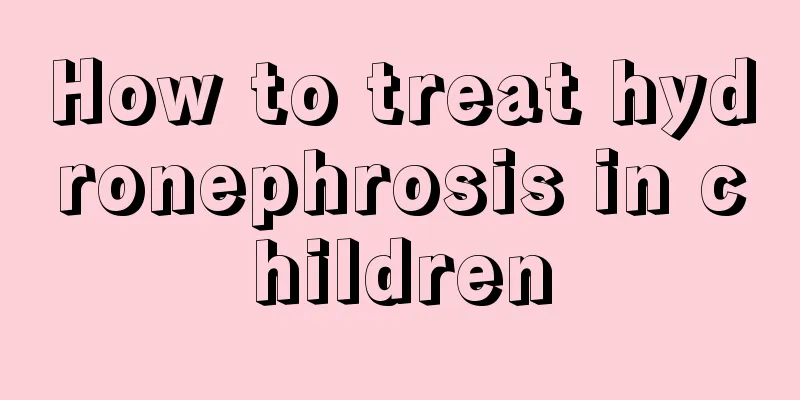Child falls and convulses

|
It is normal for children to fall down when they are not careful while playing. However, some children may experience whole-body convulsions after falling down, which is quite dangerous. You should go to the hospital for a detailed examination to confirm the real reason for your baby's condition. However, this is not a disease, but a serious clinical symptom, so you should treat the primary disease first. Convulsions are not a disease, but a serious clinical sign of a disease, or the main manifestation of certain diseases (epilepsy, febrile convulsions, hypocalcemia, etc.). A comprehensive analysis should be conducted to clarify the cause of its occurrence. (1) A detailed and accurate medical history is an important basis for diagnosing the nature of convulsions and analyzing the causes of convulsions. 1. Types of convulsions: Due to different causes, the forms of convulsions are also different. The following are common clinical cases: (1) Generalized convulsion: It is the contraction of skeletal muscles throughout the body. For example, a grand mal seizure is manifested as tonic-clonic convulsions; tetanus is a continuous tonic convulsion. (2) Localized convulsions: continuous twitching of a certain part of the body or face. For example, focal motor epilepsy is often manifested as repeated convulsions of the corners of the mouth, eyelids, hands or feet; if the convulsion starts from one place and gradually expands according to the arrangement of the motor area of the cerebral cortex, that is, starting from the thumb on one side and gradually extending to the wrist, arm, and shoulder, it is Jackson epilepsy. Tetany is characterized by intermittent myotonic muscle spasms in the limbs (most notably in the hands of the upper limbs), typically presenting as "midwife" hands. 2. Symptoms associated with convulsions: There are many diseases that cause convulsions clinically, and some convulsion types are similar, so analyzing the associated symptoms is of great significance for the diagnosis of the cause. For example, grand mal seizures are often accompanied by loss of consciousness and incontinence; tetanus is accompanied by opisthotonos, clenched jaws, a wry smile and severe muscle pain; infectious diseases are often accompanied by symptoms of systemic infection and poisoning; brain tumors are often accompanied by symptoms of intracranial hypertension and local brain dysfunction; cardiovascular, kidney diseases, endocrine and metabolic disorders all have corresponding clinical signs. 3. Medical history: It is of important reference value for diagnosis. Recurrent seizures often indicate epilepsy, while trauma, infection, and diseases of internal organs can help discover the primary cause of the convulsions. (II) Related inspections There are many causes of convulsions, which often involve various clinical departments, so detailed examination is very important. |
<<: Baby low fever convulsions
>>: Children's sudden convulsions
Recommend
Scarlet fever early symptoms
The course of scarlet fever is relatively complic...
What are the ways for children to grow taller?
Parents all want their children to grow taller, b...
Why do children suddenly have nosebleeds in summer?
Children rarely have nosebleeds before the age of...
How to treat children's rhinitis
Rhinitis is a relatively common nasal disease. Ma...
How to take care of babies with allergies
It is said that mothers are the greatest people i...
What is the reason for the white spots on the fingers of a seven-month-old baby?
The baby is everything in the mother's life, ...
What does it mean for children to have allergic constitution?
As we all know, allergies are a common problem in...
How do you know if your child is zinc deficient?
Zinc is an essential nutrient for the human body....
How to make baby vegetable shrimp balls?
Generally speaking, newborn babies are fed with b...
How often should a newborn baby drink water?
Drinking water is a very important thing in peopl...
What to do if your baby coughs sometimes
Some babies suffer from certain diseases and deve...
What to do if a child has rotten feet?
It is not uncommon for children in some families ...
How to treat children's lung qi deficiency
Lung qi deficiency in children is a common lung d...
What to do if the child is scratched and broken
Babies are particularly prone to trauma when they...
What should I do if my baby wakes up easily while sleeping?
I believe everyone knows the importance of sleep ...









